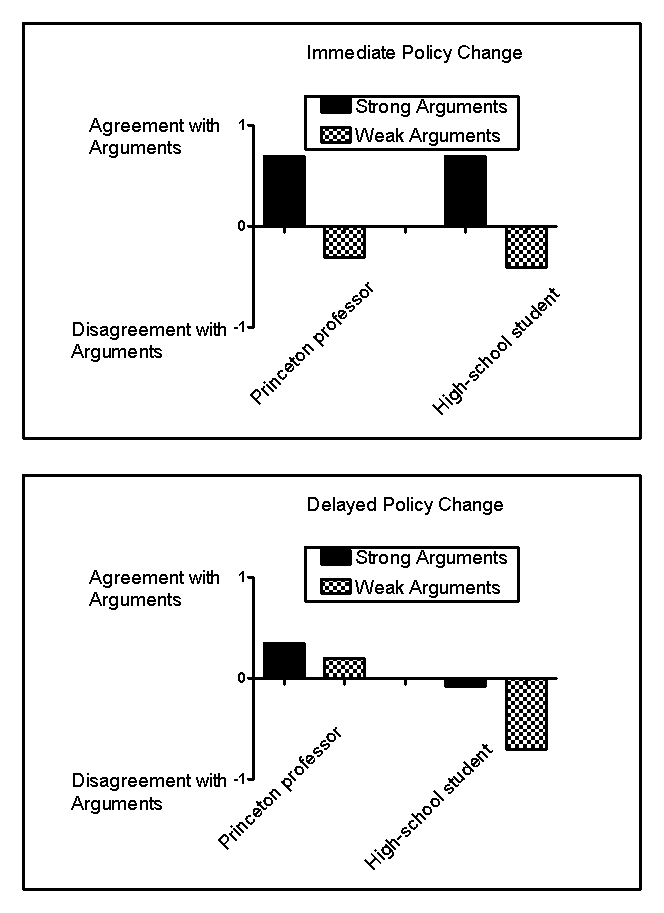Use the following to answer questions
Scenario II
The following scenario contains fabricated results consistent with the following study:
Petty,R.E. ,Cacioppo,J.T. ,& Goldman,R.(1981) .Personal involvement as a determinant of argument-based persuasion.Journal of Personality and Social Psychology,41,847-855.
Every day,consumers are exposed to scientifically based sales,marketing,and public relations strategies designed to influence purchasing decisions,change opinions,or win votes.One common sales strategy is the foot-in-the-door technique,a method that involves first making a smaller request that consumers are likely to grant and then following it with a larger request.Another common strategy is the door-in-the-face technique,which involves making an unreasonably large request that consumers will reject and then following it with a smaller request.When persuasion is necessary,it usually takes one of two forms: heuristic persuasion,which involves an appeal to habits or emotion,and systematic persuasion,which involves an appeal to facts and reason.Often,people will rely more on heuristics-simple shortcuts or "rules of thumb"-to make decisions instead of systematically weighing the evidence.
Petty and colleagues (1981) investigated some of these techniques in college students listening to arguments in favor of their college requiring an institution-level comprehensive final examination for graduation.Some students were led to believe that,if adopted,this policy would take place right away,and some were led to believe that the change would take place in a decade.In addition,some of the students were led to believe that they were listening to an argument from a Princeton professor,and others were led to believe that they were listening to an argument from a high-school student.Finally,some students heard strong arguments in favor of the policy,and some heard weak arguments.Thus,the experiment arranged six groups of students.For example,one group of students heard strong arguments from a high-school student about a far-removed policy change.Figure 13.1 shows fabricated results illustrating the major findings of this experiment.
Figure 13.1 
-(Scenario II) The door-in-the-face technique works primarily because consumers:
Definitions:
Economic Analysis
The systematic approach to determining the most efficient use of resources, which includes researching, analyzing, and applying economic theories and practices.
Marginal Physical Product
The additional output produced by employing one more unit of a specific factor of production, keeping other factors constant.
Machines
Devices or systems that use mechanical power to perform specific tasks, often reducing human effort.
Marginal Revenue Product
The increased earnings obtained by utilizing an extra unit of a production resource or input.
Q1: Self-regulation often involves:<br>A)relaxation therapy.<br>B)not succumbing to immediate
Q9: (Scenario I)A gazelle flees at the sight
Q13: The HPA axis that plays a role
Q52: You are more likely to become obese
Q66: Jumping onto subway tracks to save a
Q107: Which function is NOT an aspect of
Q149: In order to receive a diagnosis of
Q153: Aid gained by interacting with others is
Q155: Each time a cell divides,the telomeres:<br>A)lengthen.<br>B)shorten.<br>C)lose receptors
Q174: Who is LEAST likely to develop an